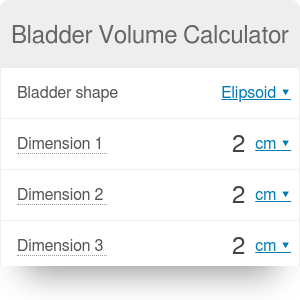


Normal radiology reference values and measurements It is calculated by dividing the PSA by the prostate volume.Īlso, do read our article on normal radiological measurements and reference values: PSA density is a better measure than PSA alone to gauge the risk of prostate cancer. Read this article to find out why: ADPKD : What else the radiologist MUST report!įor prostate volume the bullet shape formula is found to be more accurate as compared to the ellipsoid formula however, PIRADS 2.1 still recommends the ellipsoid formula so we have kept it the same. Renal volume calculator: Especially important in ADPKD patients.Calculation by using the ellipsoid formula (length x width x height × /6). Prostate volume calculator for ultrasound and MRI. Prostate volume estimation at MRI or Ultrasound and PSA-Density calculation.Bladder volume calculator ( to calculate pre and post-void bladder volumes on ultrasound – useful to rule out urinary retention).Calculate the volume for other lesions that have somewhat ellipsoid shape.Ovarian volume calculator (useful for ultrasound diagnosis of polycystic ovaries).The above calculator has formulae for calculating the following: A few modifications of these formulae have been developed which have been integrated into the above formula.

The generic formula for calculating volume on ultrasound / CT / MRI is length x breadth x height x 0.523, which assumes that most structures are ellipsoid (like an ellipsoid). That said volume may not be feasible in all conditions are a single-dimension can also be useful. Volume calculations are a good alternative. These volume measurements are also ideal for follow up of tumors post-treatment as these tend to have irregular shapes.Īlthough direct volumetric measurements are ideal, this may not be feasible in all cases as it is time-consuming. A tumor can be small in the axial dimensions but can be oblong giving rise to a larger volume than what would have been estimated using two dimensions. Check out other calculators and tools here: Radiology Calculators Overview:ģ- dimensional volume measurements are far superior to 2- dimensional measurements as anatomical and pathological structures can have one dimension skewed.


 0 kommentar(er)
0 kommentar(er)
